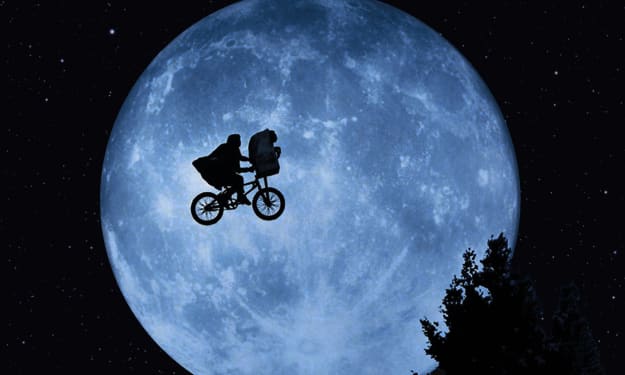Is the 'V for Vendetta' Movie Better than the Comic Book?
Remember remember when you watched 'V for Vendetta' on the fifth of November? Or did you read it first?
V for Vendetta was first a fantastic comic, and then a fantastic movie. Are we here to argue which was better? That's for you to find out, no matter what the creator of the comic Alan Moore might want us to do. There were some significant changes that the movie made from the original source material while trying to remain as faithful to the message of the comic as possible. Most of these changes were done to update the source material and adapt for the time restraints of a major motion picture.
After all, some updates would be needed to make a comic originally published in black and white in Warrior, a British comics anthology of the early 80s, relevant to general audiences as a blockbuster movie. If you're wondering about the changes made to adapt the comic successfully for cinema, read below. Then choose for yourself which you prefer, although a true geek will always love both.
Taking Aim at Authoritarian Government

Image via WordPress user truthandshadows
Both the comic and the movie take shots at authoritarian government. However, the inspiration behind both are a little different. The comic was inspired by Margaret Thatcher, a conservative prime minister who came to power during the Cold War and focused much of her efforts on free market, disempowering trade unions, and centralizing power within a small government. The movie is, of course, an updated vision, taking the Bush era presidency’s push to the right, moving it to London, and working out its horrifying conclusion.
Thatcher focused on making what she saw an organized, moral society within the bounds of capitalism. Control was exerted to oppose the threat of a permissive society in order to better fight the scourge of communism. You can see it in the comic when much of the Norsefire party truly does believe they’re doing the right thing—even as their fascist policies are brutalizing the people.
Bush, on the other hand, was far more into scare tactics, and this idea bleeds into the movie. In the comic, Norsefire focuses on morals and structure. Conversely, the film is all about fear—fear of the government. Fear of terrorists. Fear of anything different. The sense of creeping doom unexplainable terror foisted upon the American people after 9/11 is rampant throughout the movie’s version of London.
Biological or Nuclear Disaster?

Image via Weather Know
Again, we can see the difference in when these two pieces were written in the kinds of disaster they employ (which ultimately rocket the Norsefire party into power). In the comic, which was written during the tensions between Western countries and the Soviet Bloc, the threat is a nuclear war. From the ashes, the Norsefire party takes control, destroying any opposition and ruling Britain as a police state.
In the movie, however, the threat has been updated to be a much more insidious one. After all, nuclear war is far less likely now that the Cold War has ended. In keeping with the Bush era, the threat is biological terrorism. Rather than simply surviving and coming to power, in this version of V for Vendetta, the Norsefire party seizes control of the state. They do so after secretly creating the very disease they use to justify taking the country, as they ride a wave of fear-induced compliance to victory.
What About Evey?

Image via sfsite
Of course, there were more changes to the story than just political updates. Evey is quite different depending on which version of V for Vendetta you’re looking at. In each version, Evey is rescued from a fingerman (the Norsefire equivalent of the secret police) by V because she is out after curfew. However, in the comic, Evey is a sixteen-year-old sex worker. In the movie, she’s a woman in her twenties working at a television network.
Another key difference is her relationship with Deitrich. In the book, Deitrich is involved in organized crime and Evey turns to him for protection—after which they begin a sexual relationship. In the movie, Evey works for Deitrich, who is the host of a popular talk show. There is a relationship between the two, but it is strictly platonic because Deitrich uses his liaisons with women to mask his homosexuality.
For anyone wondering, the capture, torture, and receiving of letters occur in both versions of the story. However, there is a difference in the timeline. The comic stretches over a much longer period of time, both in terms of capture and after Evey’s release. This gives Evey more time to come to terms with her identity rather than deal with a single movie magic realization of her freedom. The movie condenses a great deal into just one year for the sake of a run-time that doesn’t compete with Gone with the Wind.
There’s no doubt that in both cases, the men running Britain’s national government are evil. However, the movie has no qualms about turning them into walking caricatures. Don’t get me wrong—it works. The point, though, is that they are put on display as evil fascists, and we’re never really given much else to go on. The comic, on the other hand, gives everyone a little more personality.
Adam Susan, Adam Sutler in the film, is not the Orwellian overlord and evil mastermind that he is in the movie. Instead, he actually believes he’s doing the right thing because of his firm adherence to the values of fascism. Both Susan and Sutler are monsters settling themselves on top of an authoritarian regime while orchestrating the genocide of anyone they consider a threat. The true difference is that Sutler is cast as a forceful, confident dictator. In the comic, we can see just how broken Susan is as an inept, fearful man who professes love to a supercomputer.
Another important aspect when looking at the difference between the movie and the comic is how the authoritarian message of the government is distributed to the people. In the comic, the government has taken direct control of the fourth estate, issuing news, commandments, and information it deems important directly. There is no possible dissent from the media or real worries about censorship backlash, because the government puts its stamp on everything and anything that goes out. Lewis Prothero is “The Voice of Fate,” or the man responsible for broadcasting propaganda daily in the guise of information delivered from Fate, the government’s own computer system.
The movie, on the other hand, takes a more modern and nuanced approach by paralleling Fox News and other right wing media outlets. The news and other programming goes through government censors that approve a broadcast, but in order to maintain the appearance of independence and to keep the public trust, news media is still technically separate from the government. This technical separation is shown both to be incredibly shallow and vitally important, as Gordon Dietrich broadcasts a satire of the government that was very much unapproved by the censors—something that would have never happened in the comic (V has to illegally broadcast his messages rather than simply ignore censors as Dietrich does). Dietrich expresses belief that he is safe because of his position, but he quickly finds out how much journalism actually means when he is abducted by the government.
This is perhaps one of the biggest changes between the comic and the movie. In the comic, there is a struggle for power in the upper levels of leadership, and the top officials kill each other off. There is no bargain with V, and no action-intense fight as V kills Peter Creedy—Sutler’s second in command. Instead, after Evey shoots Adam Susan, the government tears itself apart from the inside in one desperate power grab after another. V dies, of course, but Evey dons V’s mask and costume, taking on the role of her mentor in order to incite an insurrection among the populace of London.
The movie, on the other hand, is more populist both in the way it provides everyone the moment of glorious Hollywood action (in the form of V single-handedly taking out tons of armed goons before killing Creedy himself), and in the way V’s revolution unfolds. Rather than train a single protégé, V offers his likeness to everyone and anyone willing to don a mask and cloak. A full-scale mob of unarmed citizens dressed in uniform anonymity descends upon the parliament building, forcing the police present to choose between firing on unarmed civilians or letting them begin the destruction of a symbol of corrupt government.
V for Vendetta is the iconic movie that became a figurehead of hacker and protest culture. The film turned the comic into a cultural phenomenon. Produced by the acclaimed Wachowski siblings and mega producer Joel Silver, this piece has become one of the most revered cult films. Even if you hate all the changes made (just like Alan Moore), there's no denying that this film has had an impact by introducing the now iconic Guy Fawkes mask into popular culture.
If you want to see what inspired the movie that created protest culture—this is it. Here is the iconic original graphic novel that collects all of the chapters of Alan Moore's original story, which is a direct critique of the fascist regime of Margaret Thatcher. Moore weaves a provocative narrative that will strike any reader. There's a reason why he's considered one of the greatest writers to ever work in the medium, and V For Vendetta is proof. It's impossible to pick the movie over the comic, but any informed geek should experience both.
About the Creator
Geeks Staff
The biggest bunch of geeks gathered in one 12,000 sqft warehouse in Northern New Jersey who spend their whole day just being geeks.






Comments
There are no comments for this story
Be the first to respond and start the conversation.